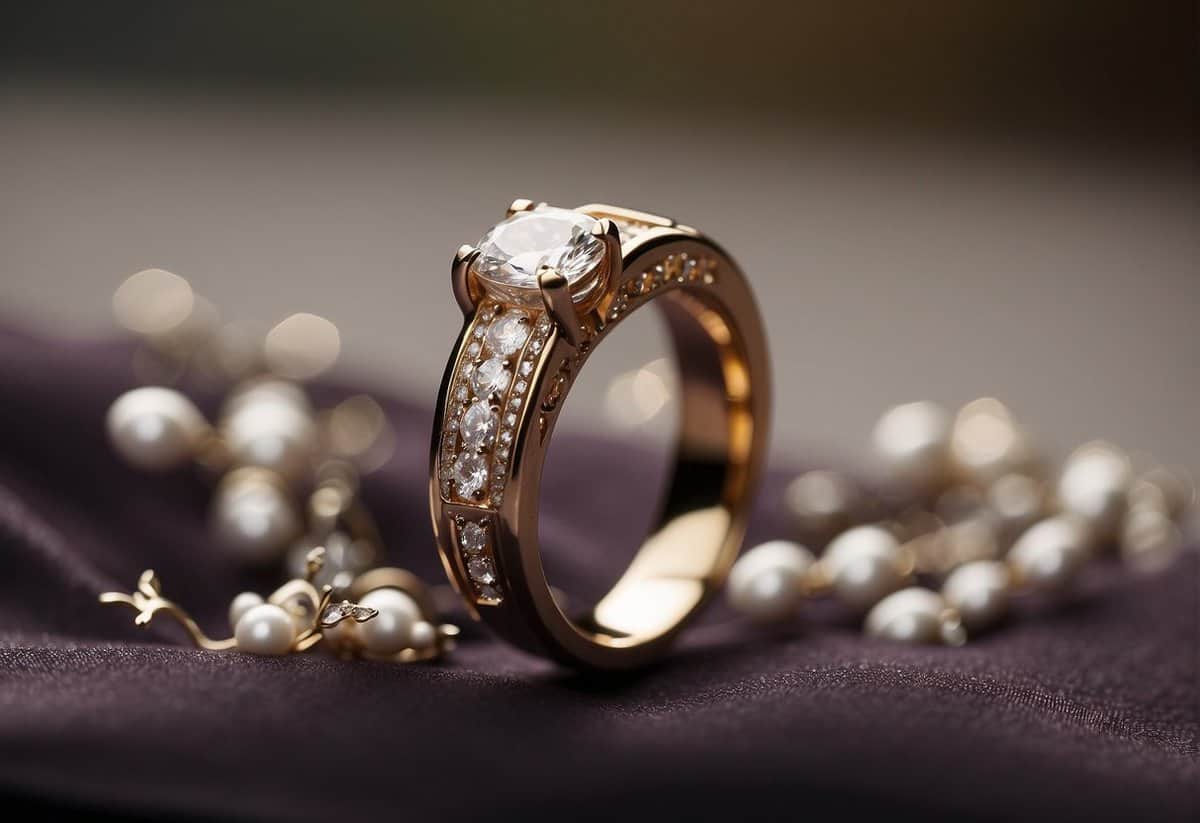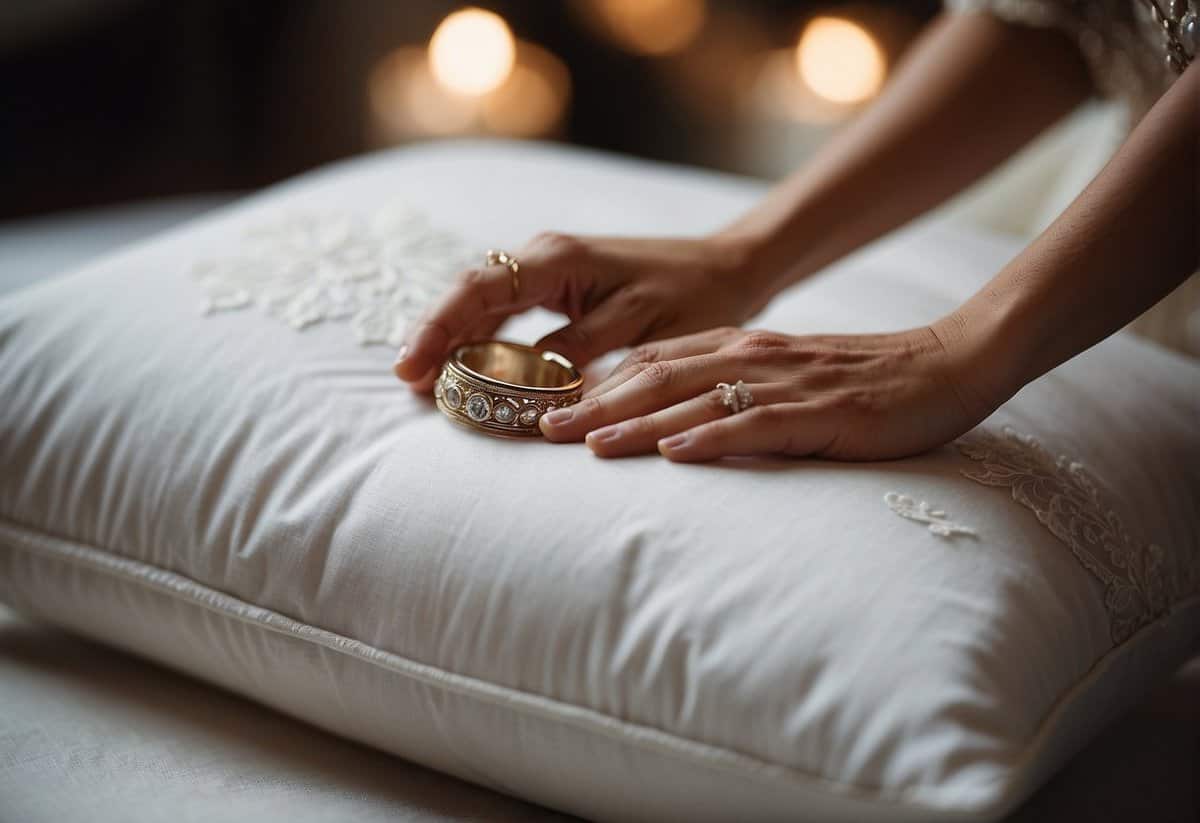Who Gets Wedding Ring First? Understanding Ceremony Order
Wedding ceremonies are steeped in tradition, and the exchange of wedding rings is a key moment that symbolizes the commitment between two people. Understanding who gets the wedding ring first during this exchange often reflects both historical significance and cultural traditions woven together over time. As couples approach this milestone, acknowledging the etiquette and symbolism behind the order in which rings are exchanged can add meaning to their special day.

In most Western wedding traditions, it’s common for the groom to receive the ring first. Typically, during the ceremony, the bride places the ring on the groom’s finger to symbolize her commitment. It’s a gesture laden with historical and symbolic importance, varying from one culture to another. Yet, in today’s diverse society, many couples choose to personalize their ceremony, sometimes altering the traditional sequence to better fit their unique relationship and values.
Key Takeaways
- The exchange of rings during the wedding ceremony symbolizes a mutual commitment.
- Traditions often dictate that the groom receives the wedding ring first.
- Couples may personalize the order of the ring exchange to reflect their individual relationship.
Historical Significance and Symbolism

Wedding rings carry deep historical roots and embody profound symbolism. As you explore the origins and meanings, you’ll notice how they reflect love and commitment, dating back to ancient civilizations.
Origins of the Wedding Ring Tradition
The practice of exchanging wedding rings began in ancient Egypt, where rings symbolized eternity due to their circular shape. Rings were exchanged as a sign of lasting vows and a physical representation of a perpetual bond. This tradition was subsequently adopted by the ancient Greeks and Romans, further cementing the role of rings in matrimonial customs.
Symbolism in Modern Weddings
Today, your wedding ring is much more than a piece of jewelry; it’s a symbol of your love and commitment. It reflects the circle of trust and the promise of partnership you create with your vows. The ring serves as a daily reminder of your commitment and the tradition that you’re a part of – a lineage of love that transcends time and borders.
The Wedding Ceremony and Ring Exchange

In a wedding ceremony, the highlight is often the exchange of rings between the bride and groom, symbolizing a lifetime of love and commitment. Here’s what you need to know about this pivotal moment and the roles that make it memorable.
Traditional Wedding Ceremony Order
Your wedding will likely follow a traditional order, which starts with the procession down the aisle, followed by readings, vows, and then the ring exchange. Typically, the groom’s ring is given first in this sequence. It’s a carefully choreographed dance where each member of the wedding party plays a part, ensuring the ceremony flows smoothly from start to finish.
Role of the Officiant
The officiant holds a central role, guiding you and your partner through the vow exchange and prompting when it’s time to exchange rings. This person can be a religious leader, a family member, or a friend who has been legally empowered to perform the marriage. They’ll explain the significance behind the wedding bands before instructing you to place them on each other’s fingers.
Significance of the Ring Bearer
Young and adorable, the ring bearer is typically a family member or a child close to you who walks down the aisle, solemnly carrying the rings, often on a small pillow. This role adds a sweet touch to the ceremony and highlights the rings that signify the unending circle of love you and your partner are promising to each other.
Wedding Ring Etiquette
Wedding ring etiquette is steeped in tradition, influencing who receives the ring first and the placement of the bands. Understanding this can help you navigate your ceremony seamlessly.

Who Receives the Ring First
Traditionally, the groom receives the wedding ring from the bride first as a symbol of commitment and unity. This gesture is often followed by the bride receiving her ring from the groom. However, this sequence might vary according to your personal or cultural preferences. Tradition in a wedding ring exchange often sees the groom acting first, but modern ceremonies can be tailored to suit the couple.
Correct Placement of Wedding Rings
Your wedding band is typically placed on the left ring finger before the engagement ring, right next to your heart. After the ceremony, you then have the option to stack your engagement ring on top of the wedding band to form your wedding ring set.
- Placing the wedding band on the left ring finger stems from the belief that a vein here runs directly to the heart.
- The traditional order is first the wedding band and then the engagement ring on top.
Navigating these traditions ensures your wedding ring etiquette is honored, making your special moment both meaningful and memorable.
Cultural Adaptations and Personalization

When you’re planning your wedding, understanding how different cultures approach the ring exchange and adding a personal touch can make your ceremony even more memorable. Let’s explore how diverse traditions can inspire your special day and ways to make the ring ceremony reflect your unique relationship.
Global Variations in Ring Exchange
In different parts of the world, whom receives the wedding ring first can vary. For instance, in many Western countries, it’s typical for the groom to place the ring on the bride’s finger first, often seen as a gesture of love and commitment. However, some couples opt to personalize this aspect of the ceremony to better support and respect their unique values or heritage. For example, a Susan Stripling Photography article details how the Roman adaptation of the wedding ring showcased evolving cultural practices that retained core symbolism while reflecting the era’s values and aesthetics.
Personal Touches to the Ring Ceremony
You can personalize your wedding ring ceremony in a way that best represents your relationship and the love you share. Some couples may choose to have both individuals exchange rings simultaneously to emphasize equality in their partnership. Others integrate family traditions or create new ones to add depth to their ceremony.
- Engraving your engagement ring with a special date or phrase adds a sentimental value that is uniquely yours.
- Custom-designed rings allow you to incorporate symbols or elements significant to your story.
By adapting the ring exchange, you ensure the act resonates with your shared experiences and aspirations for marriage.
Frequently Asked Questions

Wedding ceremonies are full of tradition, including the poignant moment of the ring exchange. Here’s what you need to know about this significant part of your special day.
In what order do the bride and groom exchange rings during the ceremony?
Typically, during a wedding ceremony, the groom places the wedding band on the bride’s finger first, symbolizing his commitment. The bride then follows, completing the exchange.
How is the ring exchange scripted typically during a wedding?
The wording can vary, but often after vows are said, the officiant prompts the groom to place the ring on the bride’s finger with a phrase like “I give you this ring as a sign of my love.” The bride then repeats a similar phrase.
Who is responsible for holding the rings until the exchange?
Usually, the best man or a designated ring keeper holds the wedding bands and is prepared to hand them to the officiant or the couple when it’s time for the ring exchange part of the ceremony.
In a traditional wedding, who says ‘I do’ first?
In a traditional wedding, the groom is usually the one to say ‘I do‘ first, responding to the officiant’s questions about his willingness to enter the marriage.
When wearing a wedding set, which ring is placed on the finger first?
When wearing a wedding set, the wedding band is typically placed on the finger before the engagement ring. This is done during the ceremony and is based on the tradition that the wedding ring should be closest to the heart.
Should the wedding band be worn above or below the engagement ring?
After the ceremony, you should wear the wedding band below the engagement ring. This keeps it closer to your heart and is the traditional way to wear these symbols of love and commitment.
